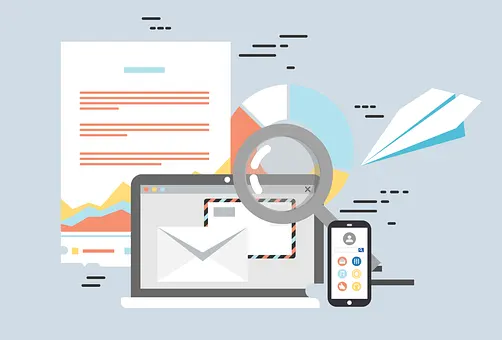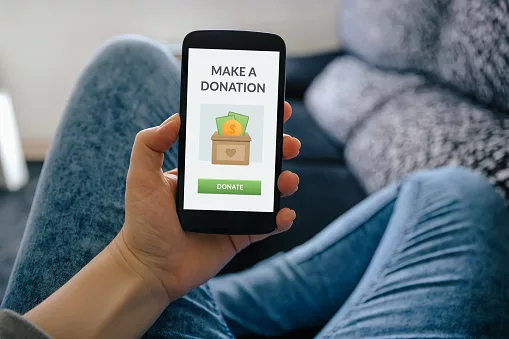
Donors give because they feel passionate about a cause or an organization. They often have a personal connection to that cause, which makes them more likely to get involved in the fundraising process. By making the effort to get to know your donors, you will be able to tap into this passion and willingly get them on board in support of your charity or nonprofit campaign.
Follow our simple guide on how to get to know your donors, create lasting partnerships, and optimize the success of your fundraiser.
If Supporters Aren’t Interested, Move On!

Before you dive into finding your prospective donors, make sure to bear something essential in mind. If a potential donor is not interested in your cause or organization, let them go and move on. As with your supporters, there will be certain causes that you feel more passionately about than others. Remember this when you are pursuing new donors. For example, if they are not animal lovers, they are unlikely to donate to an animal rescue fundraiser. Save them and yourself the time and effort and move on to other promising donors.
Get to Know your Audience
If you want to engage your followers and turn them into donors, it’s essential to understand their needs and ability to give. There are several important factors to take into consideration when researching your donors.
Demographics
A great place to start researching your target audience is by looking at the demographics. Age, gender, life stage, ethnicity, geographical location, employment, and income are all great indicators to obtain an insight into your audience.

For example, say you choose an older audience. It is more likely that they have a steady income and are more able to give. They may also be more familiar with the idea of fundraising and find it less daunting to part with their money. On the other hand, a younger audience may bring something fresh to the table and might be easier to engage on social media, which will enable you to broaden your outreach – potentially to a global community.
It’s also helpful to look at income and employment within the demographics of your prospective audience. No matter how enthusiastic a person is about working with a charitable organization, if they do not have the ability to give financially, your fundraiser will not reach its goals. Many people feel uncomfortable talking about money and wealth, so take this into consideration and be discreet with your research and findings. Common indicators of wealth which will result in a better chance of donations are:
- Career and income
- Business affiliations
Physiological Information
It’s useful to understand the inner workings of your donor’s minds in order to understand their needs and engage successfully. Think about their:

- Motivations
- Lifestyle
- Personality
- Way of thinking
- Likes and dislike
By understanding these factors, it will be easier to choose a direction to go in when marketing your cause. Acknowledging this information can help you connect on a deeper level with your donors.
Engagement History
Once you have gathered demographics and physiological information about your target audience, it’s vital to understand their engagement history with your cause and organization.

Factors to consider are:
- Have they got a history of giving to your cause/organization (one-time, recurrent, or major donors)?
- What is their prior involvement? – volunteering, past employee
- How did they first find out about/get involved with the cause?
- How have you communicated with them in the past (emails, social media)?
Learning about your target audience’s past involvement with your organization or cause will increase the success of your fundraiser by adding a personal and familiar touch to donor engagement.
Data Analysis
Measuring the patterns of your fundraiser can give you a huge insight into audience behavior. By incorporating data analysis into prospect donors you can transform campaign performance.
Here are three examples of how collecting key metrics can improve your fundraising objectives:

- Measuring donor participation is a highly valuable benefit of implementing data analysis in your fundraiser. By tracking your audience’s growth rate, you will be able to examine the efficiency of your campaign’s strategies, in other words, what is and what isn’t working to engage your supporters. Once you have this priceless information at hand you can decide to continue with the strategies in place or change directions to suit the needs of your donors.
- It is crucial to keep track of spending during your campaign. Use data analysis to measure the cost of the event and how much revenue was generated. This will also indicate where you can make improvements for future fundraisers.
- Say that your data analysis shows that many prospective donors lean towards mobile giving. Now is the time to start thinking about how mobile-optimized your website and campaign, for example, do you offer Text-To-Donate and mobile giving?
Make your Donor’s Voice Be Heard

Encourage your donors to get more involved with your cause by listening to their opinions and input. To get the most out of your fundraiser, the relationship between the organization and the donor should be a two-way street.
A great example of this is by using an Instagram Stories feature, where you can add an, ‘Ask Me Anything’ sticker. This is a fun tool to encourage your supporters to ask anything they like about your organization, the story behind your cause, how to donate and how to get involved. Also, post polls and trivia questions to your fundraising live stream, making for an interactive event, which is a great way to gain more interest and involvement with your donors.
All of this adds a personal touch to learning more about your prospective donors and generates high levels of engagement. By asking them what they want, it makes supporters feel like their opinion matters in the overall process and will make donors more invested.
Make It Simple for Supporters to Donate
We live in a busy world, and most people are looking for solutions to make their lives easier. This is no different when it comes to helping your donors find convenient ways to give. The simpler it is, the more likely they are to donate.
By offering mobile giving tools like Text-to-Donate, you are providing great ways to increase donation levels. Text-to-Donate allows your donors to easily give to your organization or charity at any time from anywhere, right from their mobile devices.

Conclusions on Getting to Know Donors
The most important skill when researching prospective donors and getting them to participate in your fundraiser is listening. You are only going to understand their needs, ability to give, and what impact they hope to make if they are talking, not you. So listen carefully, with an open mind, and cultivate a mutual relationship. Remember that happy donors make for incredibly successful fundraisers time and time again.
![16 Best Fundraising Platforms for Nonprofits [2024] 16 Best Fundraising Platforms for Nonprofits [2024]](https://www.dojiggy.com/files/sites/164/2022/07/best-fundraising-platforms-for-organizations-1-425x264.webp)


